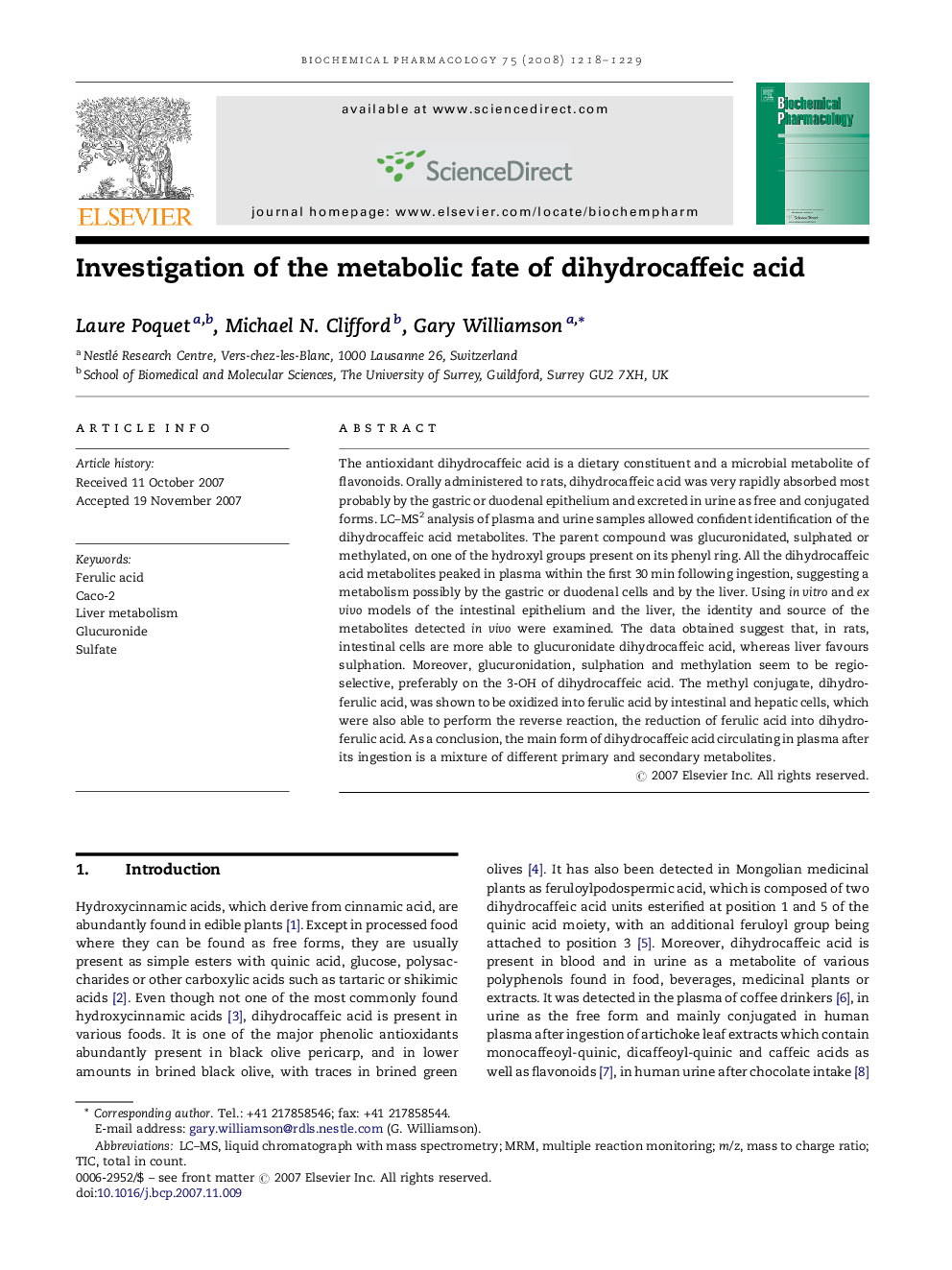| کد مقاله | کد نشریه | سال انتشار | مقاله انگلیسی | نسخه تمام متن |
|---|---|---|---|---|
| 2514625 | 1118475 | 2008 | 12 صفحه PDF | دانلود رایگان |

The antioxidant dihydrocaffeic acid is a dietary constituent and a microbial metabolite of flavonoids. Orally administered to rats, dihydrocaffeic acid was very rapidly absorbed most probably by the gastric or duodenal epithelium and excreted in urine as free and conjugated forms. LC–MS2 analysis of plasma and urine samples allowed confident identification of the dihydrocaffeic acid metabolites. The parent compound was glucuronidated, sulphated or methylated, on one of the hydroxyl groups present on its phenyl ring. All the dihydrocaffeic acid metabolites peaked in plasma within the first 30 min following ingestion, suggesting a metabolism possibly by the gastric or duodenal cells and by the liver. Using in vitro and ex vivo models of the intestinal epithelium and the liver, the identity and source of the metabolites detected in vivo were examined. The data obtained suggest that, in rats, intestinal cells are more able to glucuronidate dihydrocaffeic acid, whereas liver favours sulphation. Moreover, glucuronidation, sulphation and methylation seem to be regio-selective, preferably on the 3-OH of dihydrocaffeic acid. The methyl conjugate, dihydroferulic acid, was shown to be oxidized into ferulic acid by intestinal and hepatic cells, which were also able to perform the reverse reaction, the reduction of ferulic acid into dihydroferulic acid. As a conclusion, the main form of dihydrocaffeic acid circulating in plasma after its ingestion is a mixture of different primary and secondary metabolites.
Journal: Biochemical Pharmacology - Volume 75, Issue 5, 1 March 2008, Pages 1218–1229